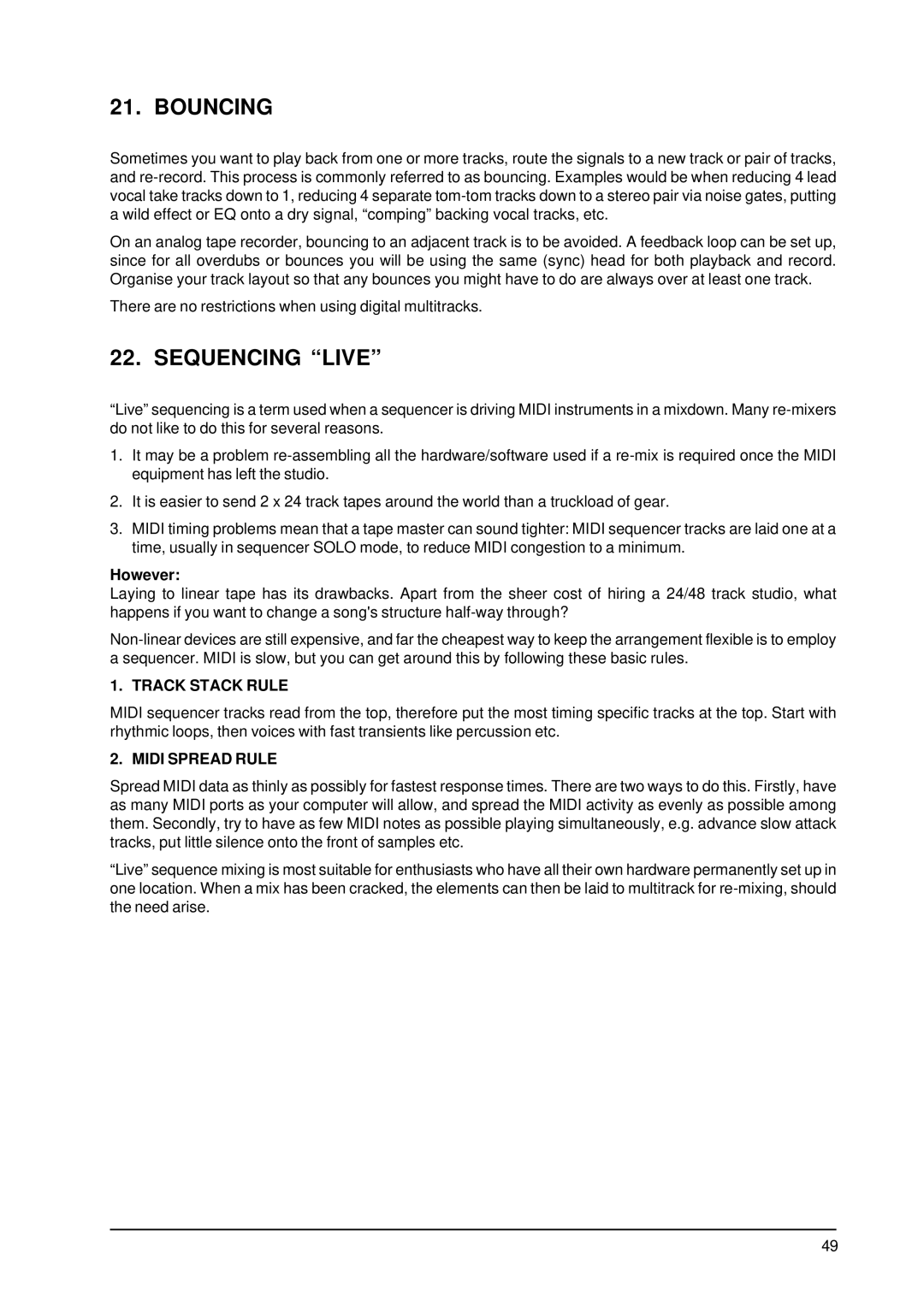21. BOUNCING
Sometimes you want to play back from one or more tracks, route the signals to a new track or pair of tracks, and
On an analog tape recorder, bouncing to an adjacent track is to be avoided. A feedback loop can be set up, since for all overdubs or bounces you will be using the same (sync) head for both playback and record. Organise your track layout so that any bounces you might have to do are always over at least one track.
There are no restrictions when using digital multitracks.
22. SEQUENCING “LIVE”
“Live” sequencing is a term used when a sequencer is driving MIDI instruments in a mixdown. Many
1.It may be a problem
2.It is easier to send 2 x 24 track tapes around the world than a truckload of gear.
3.MIDI timing problems mean that a tape master can sound tighter: MIDI sequencer tracks are laid one at a time, usually in sequencer SOLO mode, to reduce MIDI congestion to a minimum.
However:
Laying to linear tape has its drawbacks. Apart from the sheer cost of hiring a 24/48 track studio, what happens if you want to change a song's structure
1. TRACK STACK RULE
MIDI sequencer tracks read from the top, therefore put the most timing specific tracks at the top. Start with rhythmic loops, then voices with fast transients like percussion etc.
2. MIDI SPREAD RULE
Spread MIDI data as thinly as possibly for fastest response times. There are two ways to do this. Firstly, have as many MIDI ports as your computer will allow, and spread the MIDI activity as evenly as possible among them. Secondly, try to have as few MIDI notes as possible playing simultaneously, e.g. advance slow attack tracks, put little silence onto the front of samples etc.
“Live” sequence mixing is most suitable for enthusiasts who have all their own hardware permanently set up in one location. When a mix has been cracked, the elements can then be laid to multitrack for
49
